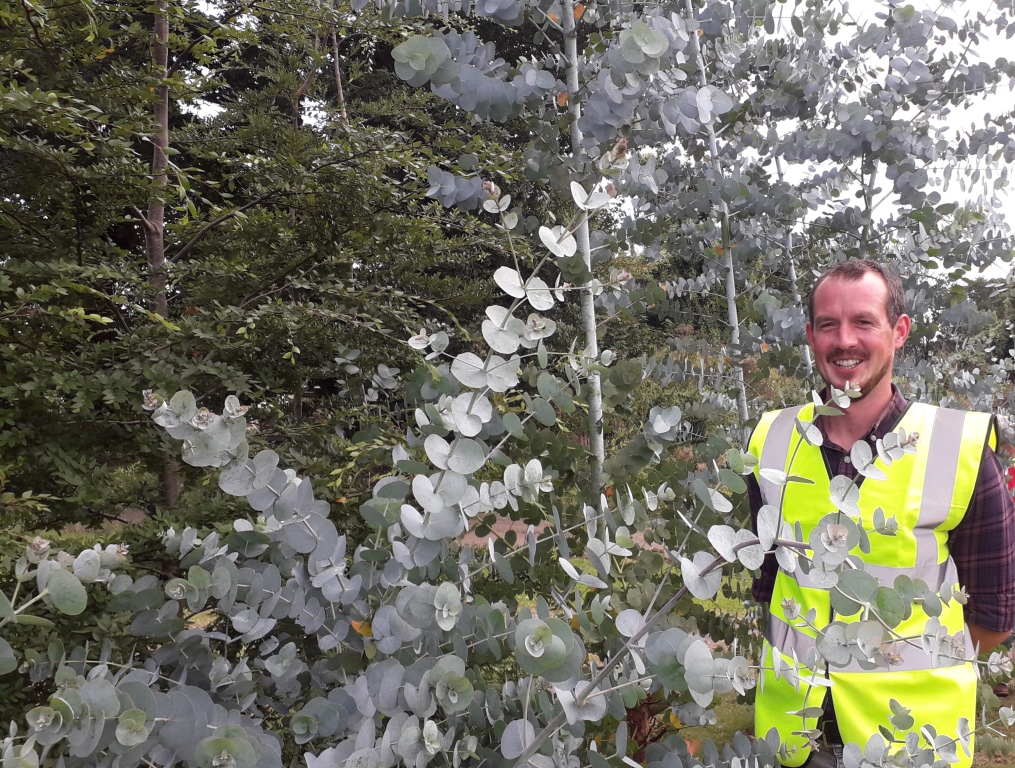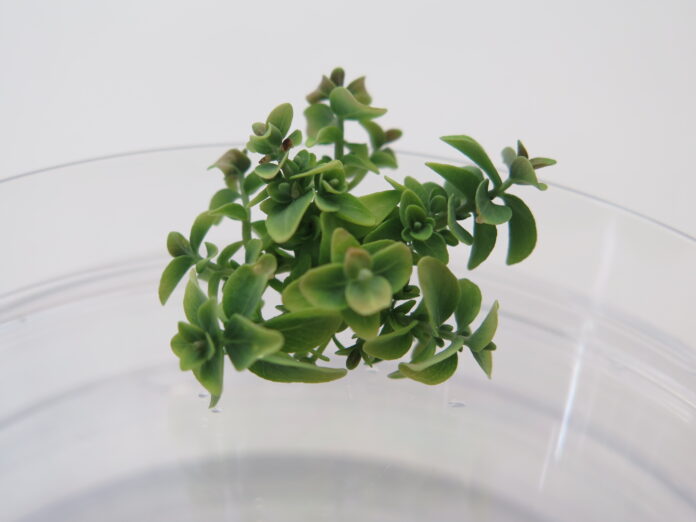Demand for Eucalyptus within the cut foliage sector has increased, leading researchers at Teagasc to look at ways to improve the quality of Eucalyptus trees grown specifically for this purpose
Eucalyptus trees are native to certain southern hemisphere countries, such as Australia, Papua New Guinea, and Indonesia, but they are widely cultivated throughout the world. There are over 500 species of Eucalyptus, many of which grow well in the mild temperate climate of Ireland.
Eucalyptus trees have attractive silvery, blue-grey, and green foliage all year round, and as such Eucalyptus has become a much-desired element of cut foliage (vegetation that acts as a source of decoration) in mixed flower bouquets. While especially popular during holidays like Christmas, Valentine’s Day, and Mother’s Day, Eucalyptus’ popularity also garners a year-round demand as it’s one of the most popular decorations for events such as weddings.
In Ireland, several species are cultivated commercially, specifically for use as cut foliage, and there are currently over 100 hectares of Eucalyptus in commercial cut foliage production. Four species dominate – Eucalyptus parvula, Eucalyptus cinerea, Eucalyptus glaucescens, and Eucalyptus subcrenulata – but there is always demand for new and interesting foliage with novel characteristics. The cut foliage sector has to be able to respond to these demands, so researchers at Teagasc’s Horticulture Development Department have screened 15 Eucalyptus species to evaluate potential new species for foliage as part of the New Leaves project.

THE CHALLENGES OF REPRODUCING HIGH-QUALITY TREES
Eucalyptus plantations are currently established from seed-raised plants, using seed that has been collected from good quality plantations in Australasia. However, as each seed is unique, there can be considerable variation in the quality characteristics of each tree from the same seed lot. High-quality trees with exceptional characteristics can be identified in plantations from time to time, and it would be very useful to be able to propagate these to bulk up the numbers of plants with the most desirable traits. The technique of vegetative propagation (asexual plant reproduction) is used regularly to produce large numbers of identical trees. However, it’s difficult to do this with most Eucalyptus species.
One way to improve vegetative propagation is to grow juvenile plants close together like a hedge, from which new shoots of Eucalyptus can develop and be taken. Work undertaken by the New Leaves project team showed that most of the tested Eucalyptus species were capable of growing well this way, producing between four and ten stems after coppicing (a pruning technique where a tree or shrub is cut to promote re-growth). However, the shoots themselves did not respond well when the cuttings were taken for vegetative propagation.
FINDING A SOLUTION IN THE LAB
As vegetative propagation was proving difficult, the project team turned to another form of propagation – micropropagation. Typically used to bulk up the numbers of hard-to- propagate species and endangered species, this technique generates genetically identical plantlets of a single plant under laboratory conditions.
Working with Eucalyptus seedlings, project team member Farhana Afroze developed a micropropagation technique that successfully micropropagated hundreds of identical young Eucalyptus plantlets from the four main species cultivated in Ireland, with multi-stems and good root systems.
This technique is now ready to be applied to unique Eucalyptus trees identified in commercial stands that have highly desirable traits for the cut foliage sector, such as those with significantly higher stem yield and quality.
Micropropagation from established trees is more challenging than using seedlings or young plants as older trees lose the ability to form roots as they mature. However, it only needs a small number of successfully micropropagated plants to be produced initially, which would then serve as the source material for further micropropagation.
Key stakeholders in the cut foliage sector have expressed interest in pursuing this line of experimentation, in the hope that a bank of elite trees can be established that will enhance the efficiency of Eucalyptus foliage production. 50% Due to increasing demand, the area of land used to plant Eucalyptus has expanded by 50% in the past three years.
ACKNOWLEDGMENTS
We would like to acknowledge the technical support of Danielle Boland, David Wallace, Leo Finn, and Liam Foy, all of whom work in Teagasc’s Horticulture Development Department. FUNDING The New Leaves project was funded through the Department of Agriculture Food and the Marine Competitive Research Call 2015. Project number 15/S/759. This article first appeared in Teagasc’s TResearch magazine.
A CUT ABOVE THE REST
Cut foliage can be used as decoration on its own, or to complement flower arrangements. But not all vegetation has what it takes to be used in this way. Key attributes of good cut foliage include:
• Interesting leaf shape and colour
• Long and short stems
• Plenty of leaves in the upper portion of the stem (to provide a good ‘fill’ in a bouquet or display). ✽

FARHANA AFROZE
|




 GERRY DOUGLAS
GERRY DOUGLAS ANDY WHELTON
ANDY WHELTON

